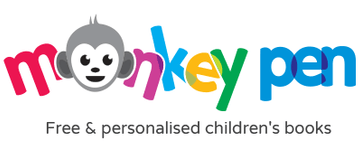Emotional Regulation Through Art: Using Coloring to Help Children Process Feelings
Oct 30, 2025
Children are tiny wonders who are full of emotions. In an instant, they may be smiling, and in the next, they could be angry, crying, or even scared. The art of controlling and communicating emotions that arise is a challenge. That's why controlling emotions is crucial. The ability to control emotions requires understanding, managing, and responding to them effectively. For parents and teachers, helping children develop this skill as soon as possible is essential for their overall development and happiness.
One of the simplest and most effective methods to assist with this is to colour. Based on the philosophies of art therapy for kids, coloring can be an opportunity to express emotions while promoting calmness and a sense of relaxation. Coloring isn't just an enjoyable exercise, but it's also an effective way for children to manage their emotions and find their equilibrium. Coloring also aids in developing the skills to cope that will be beneficial throughout their lives.
Why Emotional Regulation Matters for Children
Children over the age of 10 are still learning to recognize and respond to emotions maturely and appropriately. They may have difficulty expressing their feelings, which can lead to temper tantrums, anger, and withdrawal. Children greatly benefit from developing emotional control as they can:
- Relax when upset
- Have healthy feelings about themselves and social interactions,
- Develop empathy and social skills more effectively within learning settings and achieve more efficient learning outcomes.
Suppose children are taught to control their emotions effectively. In that case, they're better prepared to handle difficulties, build strong relationships with others, and are effective in both the classroom and the world beyond. Uncontrolled emotions, if not managed, could lead to issues with anxiety, behaviour, or problems in building relationships. This is why tools for teaching, such as coloring and art, are vital in the early stages of the child's life.
Art Therapy Principles and Children's Emotional Health
It is a long-standing therapy method that focuses on creative activities, including drawing, writing, and painting, to improve emotional and mental well-being. Children, especially, enjoy art because it's fun and secure. Unlike struggling to convey their emotions through words, children can use images, colors, and shapes to communicate their thoughts.
For example, a person who is stressed may draw many dark and heavy lines; however, a happy child might choose colorful patterns and vibrant colors. These options can help you understand the feelings they're experiencing and facilitate conversation.
The art therapy technique can also benefit by stimulating different parts of the brain that are involved in emotions and solving issues. If children can concentrate on their art, they can forget their worries and feel more at ease. It's no surprise that educators, therapists, and parents often recommend art therapy for children to help them develop emotional control.
Coloring as a Tool for Emotional Expression
In all the arts, coloring is among the simplest and most valuable activities for children. Why? Because it doesn't need any special skills. Children don't need to be proficient in drawing or writing; they pick up some crayons or pencils and start coloring.
Monkey Pen's free coloring pages offer a structured and well-organized approach, providing children with a range of options. Children can choose their preferred colors, pick how hard or soft they want to be, and then play without fear of being pushed. This blend of control and freedom is ideal for toddlers learning to manage their emotions.
Colors can also influence emotions. The soothing greens and blues provide a sense of calm, and the bright yellows and oranges boost the mood of kids. If a child decides to have a night that is saturated with reds, it may be a sign of anger or discontent. These subtle signals can help teachers and parents understand what a child may be feeling without needing words.
Coloring isn't only a pastime, it's an opportunity to express emotions. This is why our team of experts has designed several coloring books for kids. Visit our website and download the coloring book of your choice for free.
Calming Coloring Activities for Everyday Regulation
Coloring shouldn't be limited to just a few minutes of enjoyment. It can also be a powerful method to help children relax in difficult situations. Simple acts of calming coloring can help a child relax after a long day at school, control their emotions in the evening, or prepare for a difficult assignment.
These are coloring ideas that parents and educators can use:
- Mandalas and repeating patterns help calm the mind.
- Nature images, including flowers, trees, and animals, allow children to connect with tranquil scenes.
- Page for Characters: These familiar and welcoming characters provide security and comfort.
- Color themes: The holiday seasons and pages based on stories stimulate imagination while creating designs.
- Pages that have numbers that are color-by-numbers. Many illustrations let children take pleasure in and concentrate on
When incorporating these types of activities into routines, teachers and parents can offer children a way to manage their emotions at any given time easily.
Practical Tips for Parents and Educators
Coloring is most effective when it's within a safe context. Here are a few ways to make use of coloring as a calming tool:
- Create a quiet corner with crayons, pencils, and coloring books, so your children have a place to go when they want to be still.
- Establish it as a routine. Introduce coloring in the afternoon, before bedtime, or in the transition phase to help children unwind.
- Be attentive and avoid being judgmental. Don't make a fuss about how your child is coloring. Allow them to color in the spirit of expression, not perfection.
- Create a conversation starter. If your child's coloring is unusual or dark, gently ask, "Tell me about your picture." This opens up a conversation.
- In harmony with both freedom and structure, you can create themed pages that cater to your specific needs. However, you may also offer blank paper to express the development of your ideas. Both are crucial to developing emotional intelligence.
These simple steps enable children to utilize coloring as a means of expressing their emotions.
Long-Term Benefits of Emotional Regulation Through Art
The benefits of coloring extend beyond the peace that it provides. As time passes, children who engage in activities that spark their imagination develop effective coping strategies. They build the capacity to take a moment and reflect to express emotions, and find a balance instead of rushing to react quickly.
The long-term advantages of this include:
- Focus Coloring requires concentration, which can be applied to other areas, such as classes.
- Children can reduce their anxiety by learning ways to relax and relieve tension.
- Better relationships: Emotion regulation promotes empathy, compassion, and cooperation.
- Academics: The benefits of calm children include being more receptive to learning and more effective in problem-solving.
- Improve relationships. Teachers and parents who participate in coloring activities can build strong bonds of trust by sharing moments of inspiration.
Simply coloring is the foundation of emotional resiliency, a skill that can benefit children throughout their lives.
Creating the Future Artists!
Helping children to develop their emotional regulation does not necessarily require sophisticated tools or expert settings. Sometimes, the solution is in something as simple and enjoyable as coloring. Based on the principles of art therapy and child development, coloring can be a safe, relaxing, and calming way for children to explore and express their feelings.
Whether it's peaceful coloring time at home or organized classes at school, the act of coloring has a profound impact. If your child has pages and crayons, and sometimes parents and teachers offer their children more than entertainment. They offer them the opportunity to achieve emotional harmony, self-expression, and long-term health.
If your child is overwhelmed, provide them with an activity sheet. This might be the small step they need to make progress toward greater emotional development. Furthermore, our website offers a range of educational materials, including educational posters, children's storybooks, and dot-to-dot worksheets.


